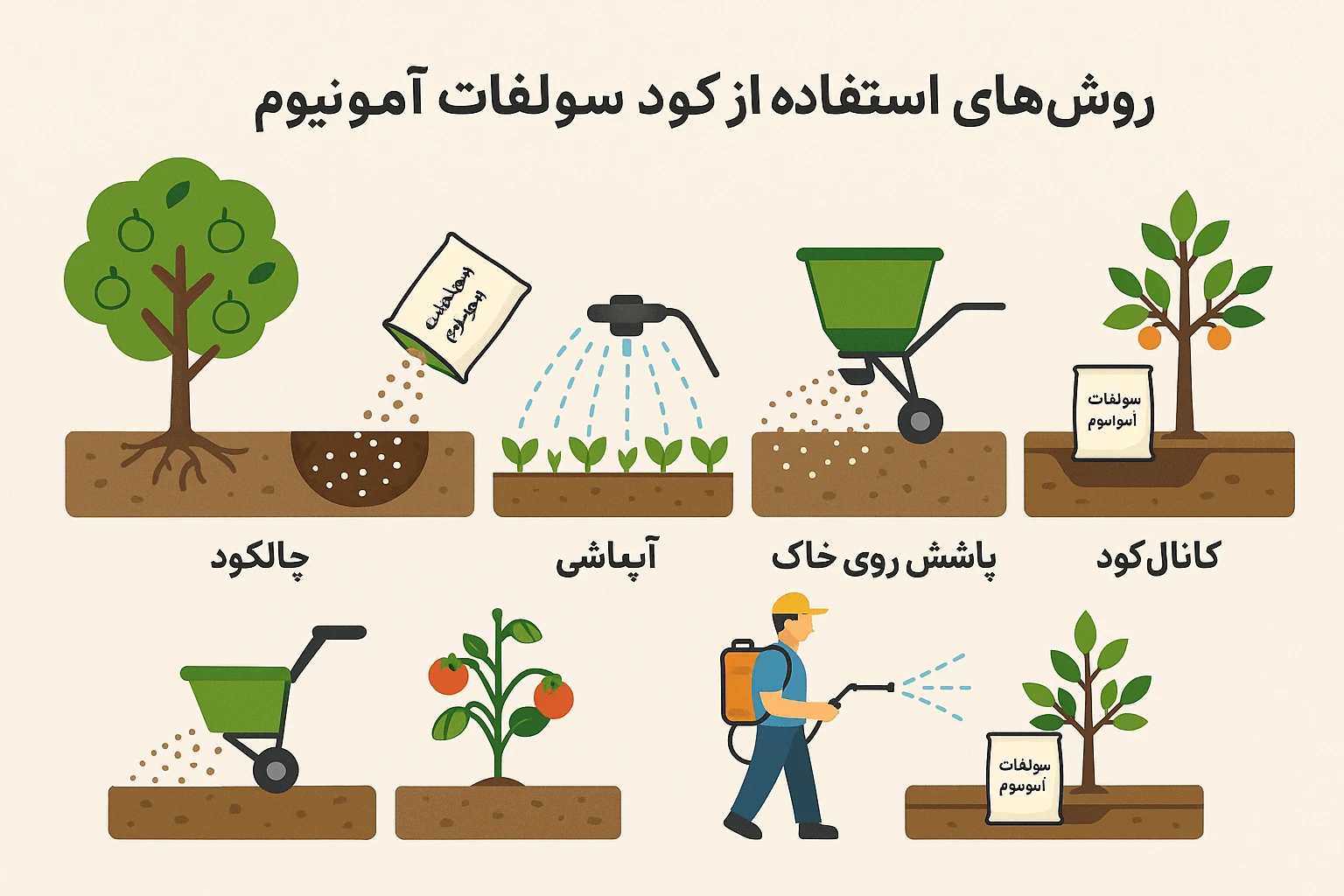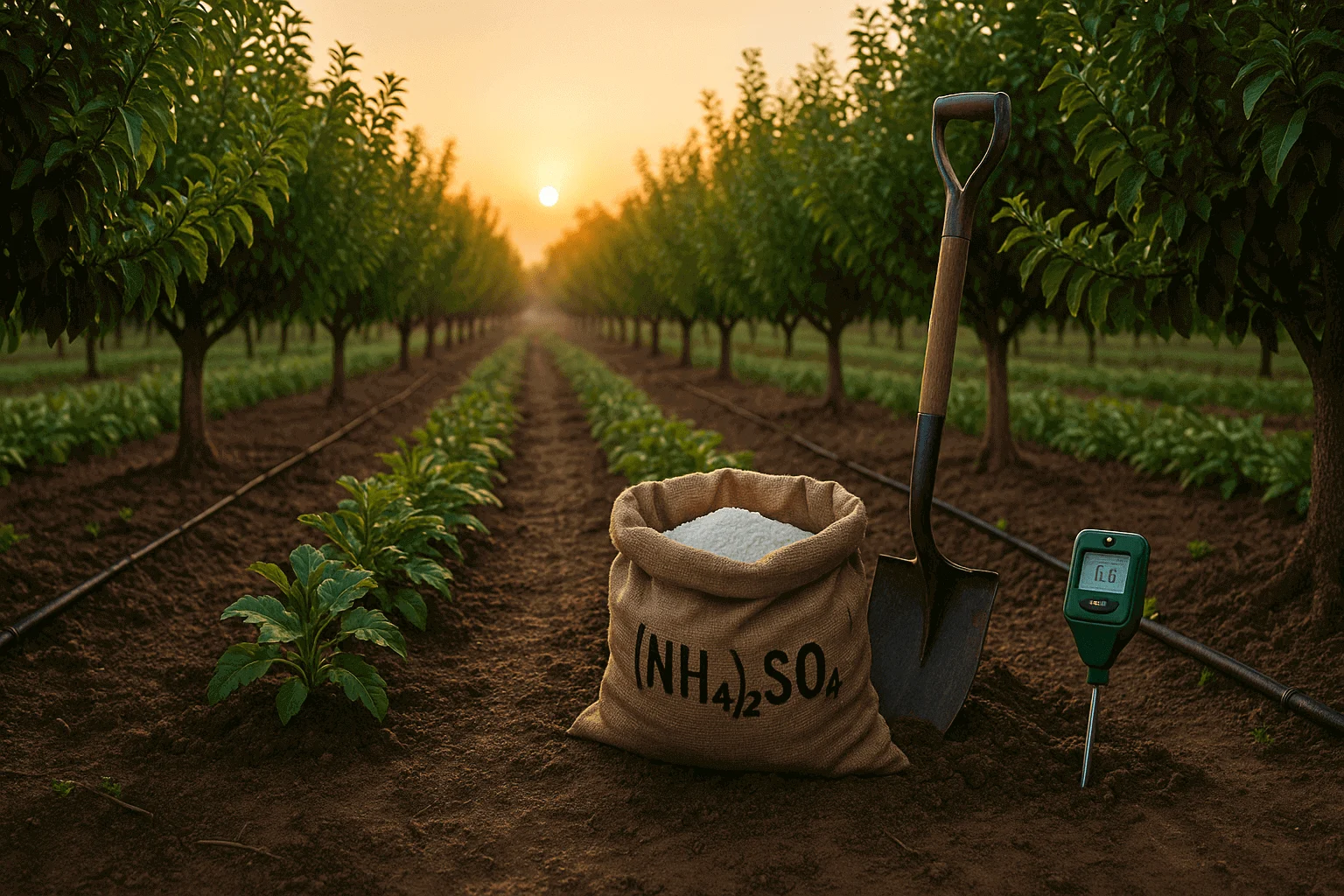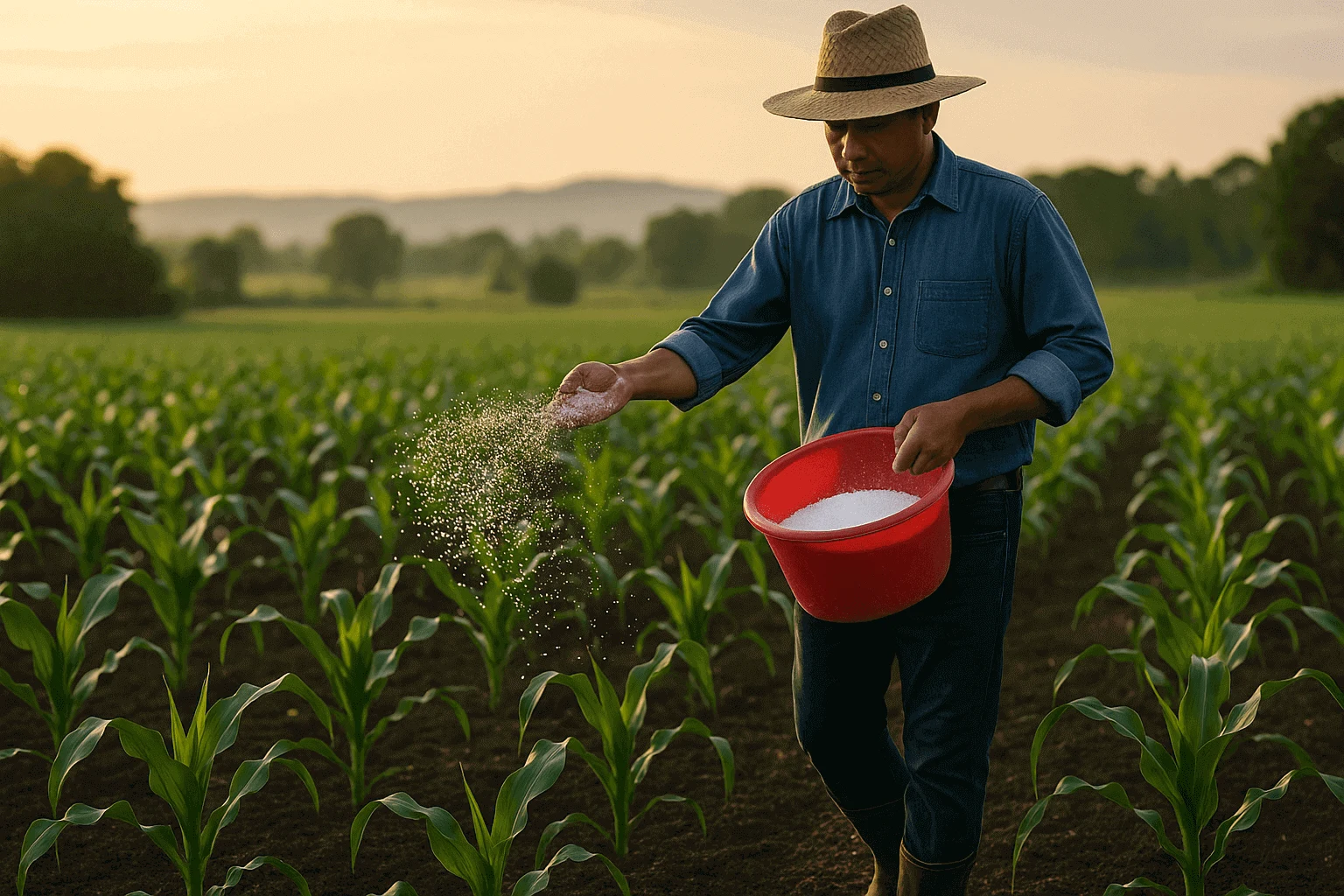Methods of Using Ammonium Sulfate Fertilizer: A Comprehensive Guide for Optimizing Plant Growth and Productivity

The Secret to Sustainable Success in Agriculture with Ammonium Sulfate Fertilizer
Imagine walking into your garden or farm early in the morning, as the first rays of sunlight touch the soil. You are welcomed by vibrant, flourishing plants: deep green leaves shimmering in the morning breeze, strong roots anchored in nutrient-rich soil, and high-quality crops ready for harvest.
This is the dream every farmer and gardener envisions. But achieving such a level of success requires smart and strategic use of agricultural tools—one of the most important being ammonium sulfate fertilizer. With its unique combination of nitrogen and sulfur, this fertilizer not only accelerates plant growth but also regulates soil pH, enhances nutrient absorption, and significantly increases yield.
The key question is: how can ammonium sulfate be used most effectively? The answer lies in choosing and applying the right method. In this article, we will explore five main methods of applying ammonium sulfate—deep placement (Chalkood), fertigation, broadcasting, foliar spraying, and trench application—with detailed analysis, practical tips, and field-based insights.
Our goal is to help you become an expert who not only uses this fertilizer but also maximizes sustainable results for your farm or orchard. Let’s dive deep and uncover the secrets of agricultural success.
Methods of Using Ammonium Sulfate: In-Depth Analysis, Benefits, and Applications
The choice of method depends on various factors, including crop type, soil texture and chemistry, regional climate, and long-term farming goals. Each method has unique features and works best under specific conditions. Let’s examine them one by one:
1. Deep Placement (Chalkood): Strengthening Roots with Precision
Preparation and Application
Deep placement (known as Chalkood in Persian agriculture) is a traditional but highly effective technique for feeding plant roots directly. Fertilizer is applied into small pits dug strategically around trees or shrubs. This method is particularly effective for fruit trees such as pistachio, walnut, olive, citrus, peach, and apricot.
Dig pits 20–30 cm deep at a distance of 30–50 cm from the tree trunk. Apply 500 g to 1 kg of ammonium sulfate per tree (depending on age, size, and soil fertility). Cover with organic-rich soil and irrigate lightly to enhance nutrient absorption.
Advantages and Challenges
The main benefit is direct nutrient delivery to roots with minimal loss, especially in heavy soils or low-rainfall regions. It also promotes stronger root systems and increases drought resistance.
Challenges include labor intensity, risk of root injury, and time consumption. However, proper application can increase root length growth by up to 20% in one season, which is crucial for older or weaker trees.
2. Fertigation (Irrigation with Ammonium Sulfate): Modern and Efficient Feeding
How It Works
In fertigation, ammonium sulfate is dissolved in water (5–10 g per liter depending on crop needs) and delivered through irrigation systems such as drip, sprinkler, or overhead systems. This method is ideal for large-scale crops like wheat, maize, rapeseed, and vegetables.
Practical Tips
Ensure even distribution with drip systems and fine filters.
Avoid excessive leaching in sandy soils or rainy regions.
Adjust irrigation timing for optimal uptake.
When applied properly, this method can increase grain protein content in wheat by up to 2%, significantly improving product quality.
3. Broadcasting on Soil Surface: Simplicity with Scientific Insight
Steps
Broadcasting involves spreading dry ammonium sulfate powder evenly across the soil surface, usually at a rate of 200–300 kg per hectare depending on soil fertility. Follow up with light irrigation to ensure downward movement into the root zone.
Pros and Cons
Pros: Quick and easy, suitable for large fields.
Cons: Wind displacement reduces efficiency; risk of soil acidification if fertilizer accumulates in patches.
Using mechanical spreaders on calm days is recommended. In arid regions of Iran, this method, combined with proper irrigation, can improve crop growth by up to 25%.
4. Foliar Spray: Rapid Growth Boost Through Leaf Absorption
How to Prepare
Dissolve ammonium sulfate in water (2–5% solution) and spray directly onto leaves and stems using fine nozzles. Apply in the early morning or late evening to avoid sunburn.
Best For: Nitrogen-sensitive crops like tomato, cucumber, zucchini, spinach, and lettuce, as well as ornamental flowers such as roses.
Results
Faster greening and leaf growth (up to 30% within a month).
Quick visible effects, sometimes within a week.
Caution: Excessive spraying or use in strong sunlight can damage leaves.
5. Trench Application: Traditional but Effective for Heavy Soils
How It Works
Trenches (15–20 cm deep) are dug about 50 cm from the tree trunk. Apply 1–2 kg ammonium sulfate per tree, cover with soil, and irrigate.
Best For: Orchards with large trees (pomegranate, apple, peach, apricot, grapevines) in heavy clay soils.
Advantages: Deeper nutrient penetration, stronger support for root systems in compact soils.
Disadvantages: Labor-intensive and time-consuming.
Field results show up to 15% root length growth per season using this method.
Key Tips for Success with Ammonium Sulfate Fertilizer
Soil Testing: Always check pH and nutrient levels before applying.
Proper Timing: Best applied in early spring or after rainfall.
Correct Dosage: Adjust based on crop type, age, and soil fertility.
Safety Measures: Wear gloves, masks, and protective clothing.
Controlled Irrigation: Apply water gently after fertilization.
Comparative Table: Choosing the Right Method
| Method | Best For | Advantages | Challenges | Dosage | Ideal Timing |
|---|---|---|---|---|---|
| Chalkood | Pistachio, Walnut | Direct root feeding | Labor-intensive | 500 g–1 kg/tree | Early Spring |
| Fertigation | Wheat, Maize | Even distribution | Risk of leaching | 5–10 g/L water | Growing Season |
| Broadcasting | Wheat, Barley | Simple & fast | Wind displacement | 200–300 kg/ha | After Rainfall |
| Foliar Spray | Tomato, Cucumber | Rapid leaf greening | Risk of leaf burn | 2–5% solution | Morning/Evening |
| Trench Method | Apple, Pomegranate | Deeper soil penetration | Labor & time intensive | 1–2 kg/tree | Late Winter/Spring |
Real-Life Example: Pistachio Orchards in Rafsanjan, Iran
In Rafsanjan, a pistachio orchard with alkaline soil applied Chalkood using 700 g ammonium sulfate per tree. After two months, roots became stronger, leaves greener, and yield increased by 30%. The lesson: soil testing is critical to avoid over-acidification.
Advanced Tips for Optimizing Ammonium Sulfate Use
Combine with organic fertilizers like compost for enhanced soil health.
Continuously monitor plant growth and adjust dosage.
Reduce rates in autumn to prepare soil for winter.
Use modern technology like soil sensors and smart irrigation systems for precision farming.
Conclusion: Time to Act for Agricultural Transformation
Each method—Chalkood, fertigation, broadcasting, foliar spray, trenching—offers unique benefits. The key to success is choosing wisely, applying precisely, and monitoring continuously.
🌱 Now it’s your turn:
Which method will you try? Start with a soil test, pick the best method, and design a plan tailored to your crops.
For further details, visit Why Should You Use Ammonium Sulfate Fertilizer? and partner with trusted suppliers to ensure high-quality products.
FAQs
1. Which method works best for heavy clay soils?
Chalkood and trenching, as they deliver nutrients directly to roots.
2. Can multiple methods be combined?
Yes, for example, Chalkood for root feeding + foliar spray for rapid leaf growth.
3. Best timing for fertigation?
Spring and early summer during active growth stages.
4. Is foliar spray suitable for all crops?
No, thin-leaf crops may burn; test on a small section first.
5. How do I know if my soil needs ammonium sulfate?
Perform a soil test; if pH > 7 or nitrogen/sulfur are deficient, ammonium sulfate is ideal.


